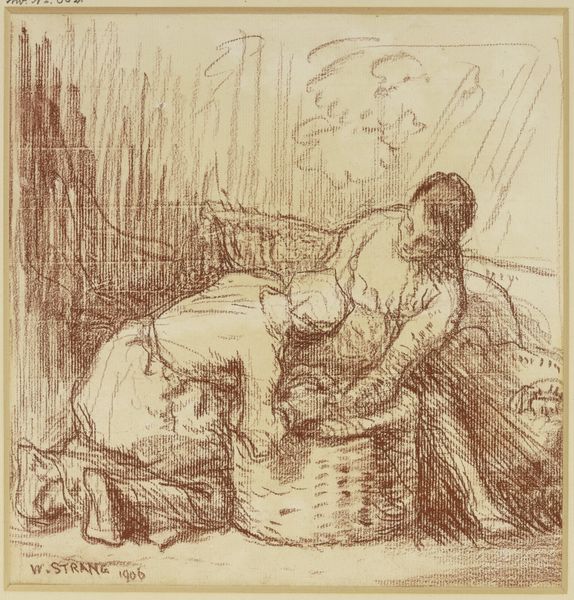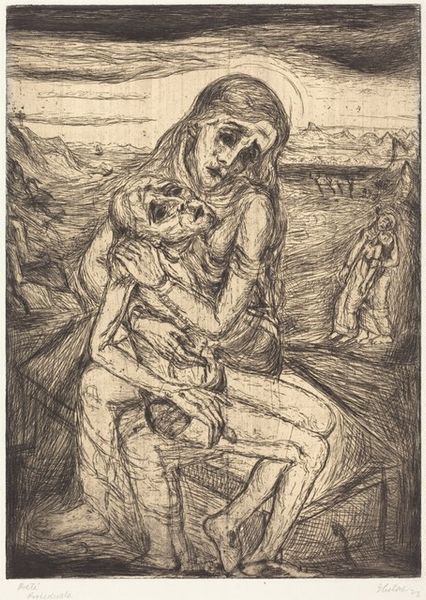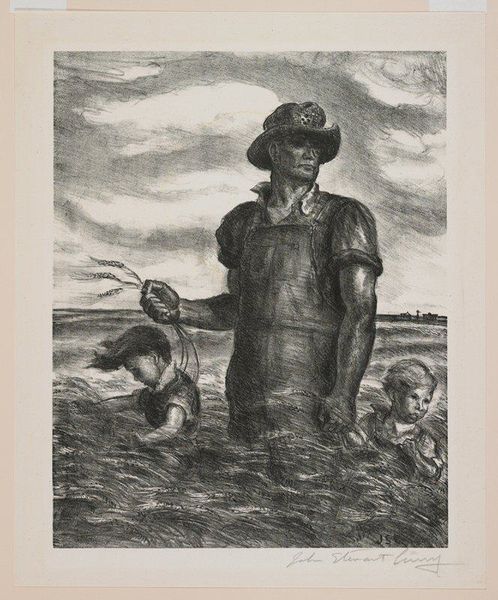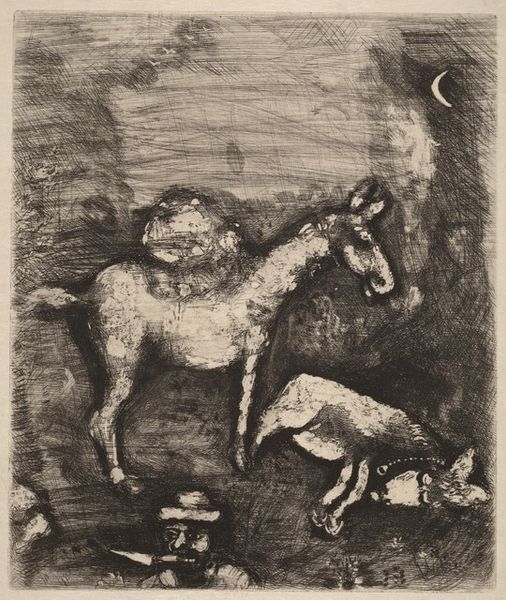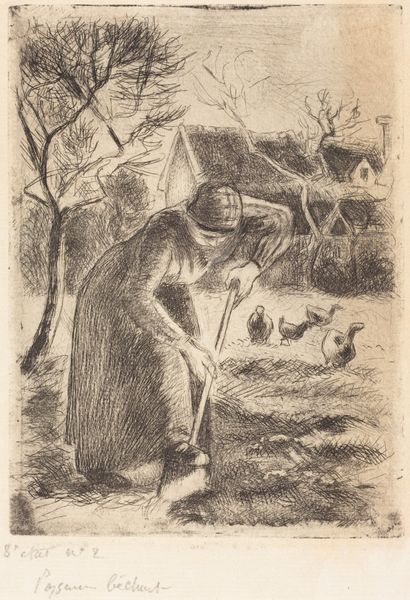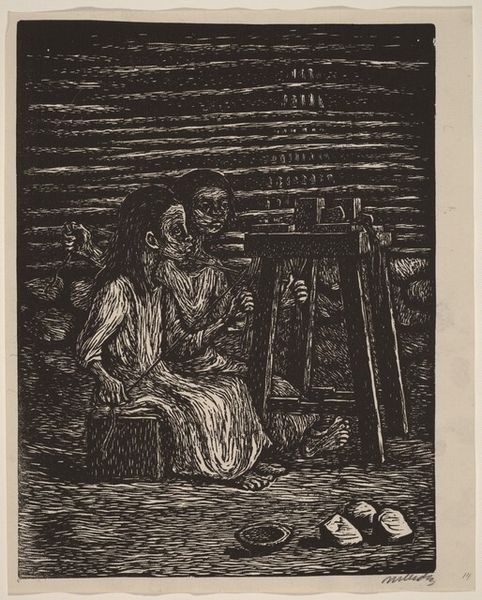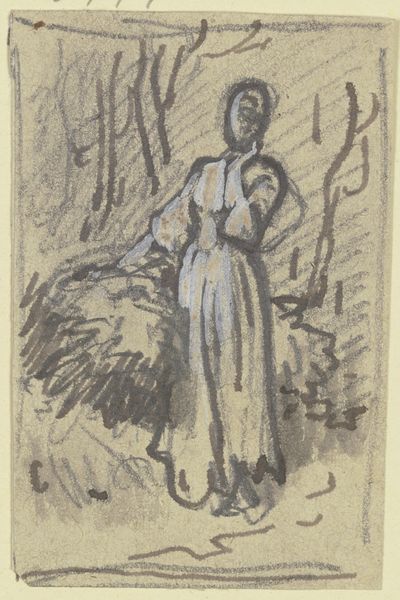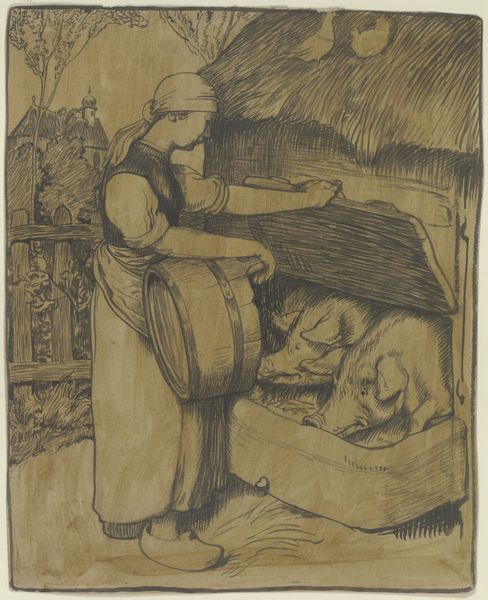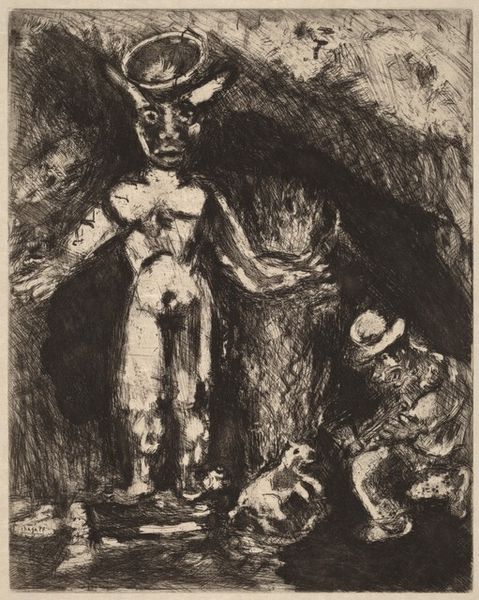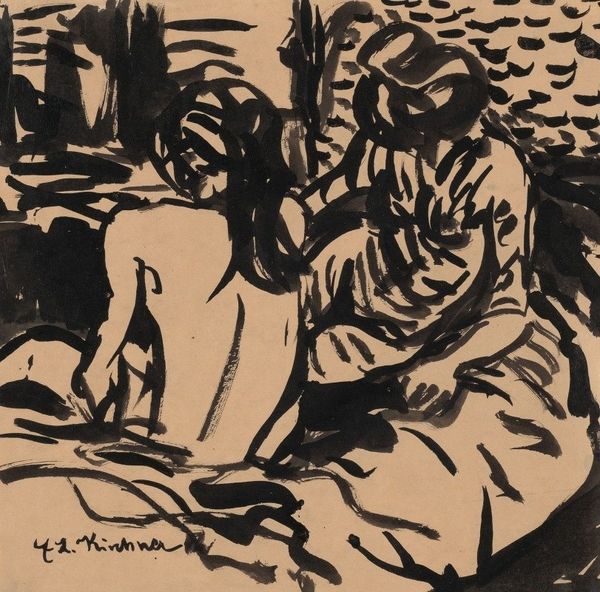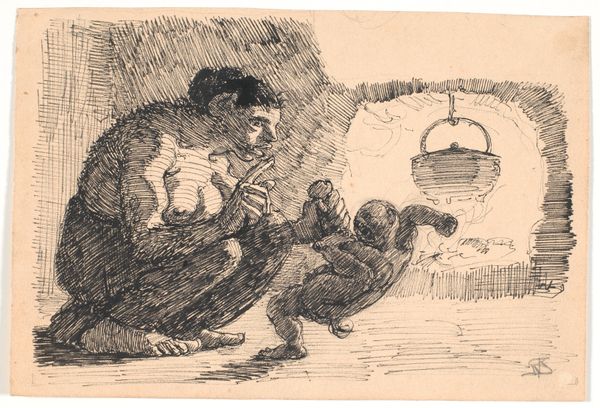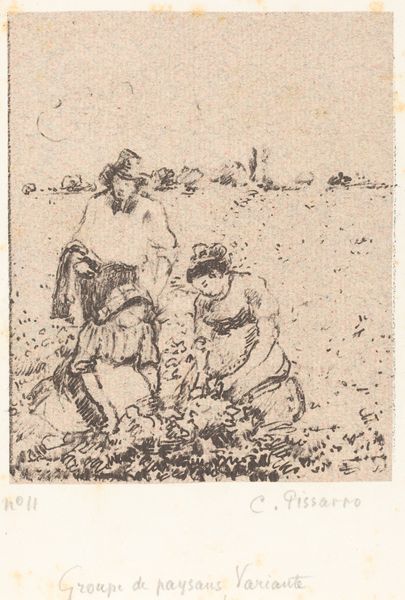
painting, oil-paint
#
portrait
#
painting
#
oil-paint
#
figuration
#
expressionism
#
naive art
Copyright: Public domain
Curator: Ernst Ludwig Kirchner's “Portrait of a Woman in a White Dress” captures its subject through layered fields of vivid color, though its exact date is not definitively known. Editor: The immediate thing I notice is how roughly worked the paint is. Thick impasto, almost sculptural in places. You can practically feel the materiality of it. Curator: It’s fascinating how the thick brushstrokes build a sense of unease beneath the seemingly simple pose. Notice how the facial expression lacks a sense of joy or contentment. Do you find any connection between the subject and perhaps an embodiment of societal expectations or constraints placed on women during Kirchner’s time? Editor: Well, I’m wondering what kind of white this is meant to be. It certainly isn't a clean white, but rather layered creams and browns suggesting possible stains and wear; if this portrait speaks to the material condition of its subject, and how this translates to a perceived purity in the way we read her presentation to the world. The construction, of this dress and perhaps also of womanhood itself. Curator: The figure also echoes familiar motifs present across portraiture in diverse periods and cultural settings. The hat becomes a sort of halo, reminiscent of idealized femininity, almost virgin-like in some sense. The darkness surrounding the figure can evoke a sense of psychological weight or unspoken emotional undercurrents. Is that the subject’s inner experience? Perhaps not truly pure or untouched? Editor: Precisely. Also note the position of her limbs. The somewhat awkward, posed quality of her arm suggests she isn't at ease or particularly in command of her body in that precise moment. In contrast to some grand salon portrait of a bourgeois women, this subject's relationship to wealth and class appears to be destabilized. Curator: I agree that the artwork makes clear she’s no salon belle! Her psychological experience is far from ideal; even through the bright palette, this figure doesn't express what might be expected. We find both the burden and complexity of female representation as it evolved over time. Editor: Ultimately, reflecting on Kirchner’s choice of material and technique makes me think of labor: both the artist’s process and the sitter’s.
Comments
No comments
Be the first to comment and join the conversation on the ultimate creative platform.

